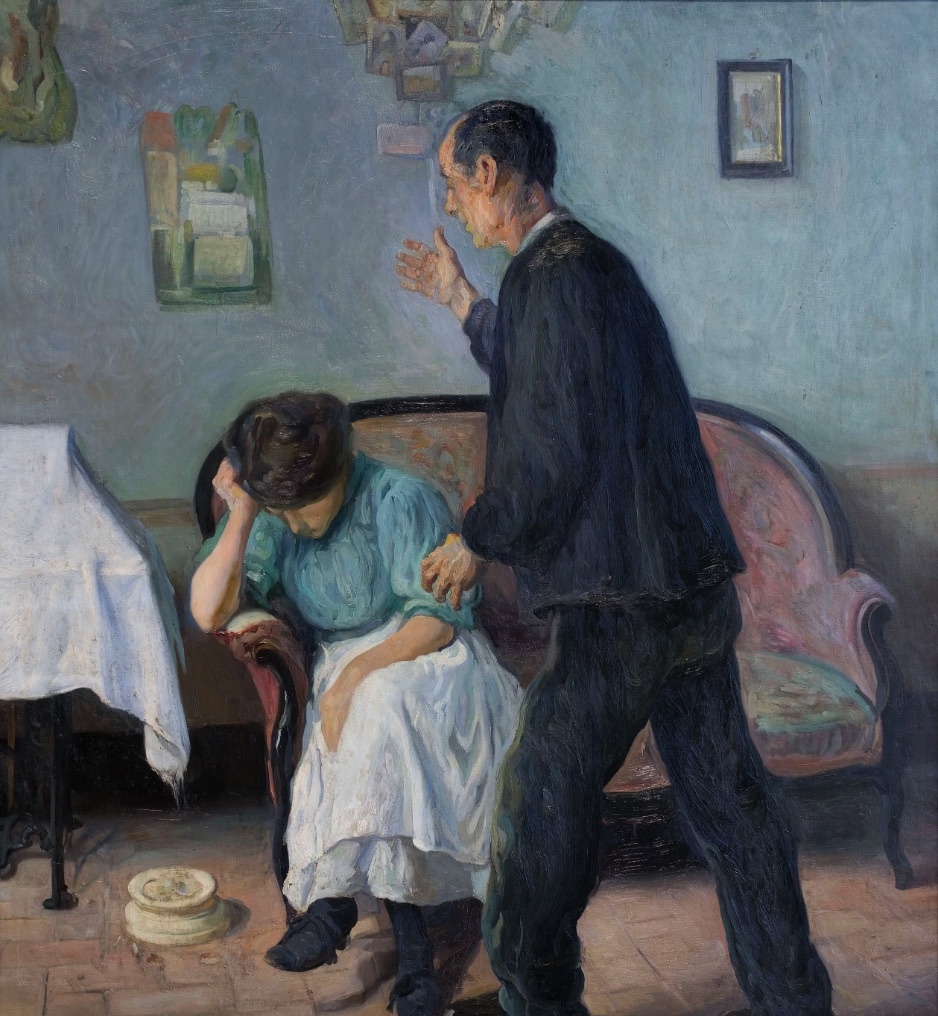Interior scene

Interior scene
· But a punishment like forced labour or even imprisonment – mere loss of liberty – has never functioned without a certain additional element of punishment that certainly concerns the body itself: rationing of food, sexual deprivation, corporal punishment, solitary confinement …
Michel Foucault, Discipline and punish (1975)
In his work Discipline and punish, Foucault points out the change that occurs in the modern age, from the violence on the bodies as the only form of punishment, to the disciplinary forms (discipline, exercises, manoeuvres, qualifications, examinations, registers) new ways to submit bodies based on a coercion of their freedom. The aim of punishment would no longer affect the body, but rather something deeper: affecting the soul, in order to reach the heart, the thoughts, the will, etc. Thus, if we analyze the violence against women, we can find the two types that Foucault analyzed. On the one hand, we can see how a whole series of moral, ethical and aesthetic discourses that legitimize female subjection and, at the same time, the physical violence over their bodies that is also justified by being associated with the private/emotional environment and therefore exempt from judgement or public punishment. Foucault, in the cited work, goes even further and adds that the objective of these new methods of control and punishment was precisely to achieve the self-vigilance of the criminal, just as in the case of women when they themselves self-censored their freedoms. What Rafael Sanchis represents with his Interior Scene of 1911 is no other than an act of gender violence that is absolutely normalized as one of the dimensions of private life, therefore never analyzed as a social problem where human rights are violated such as the life, dignity and integrity of women.
Interior scene Rafael Sanchis, 1911








